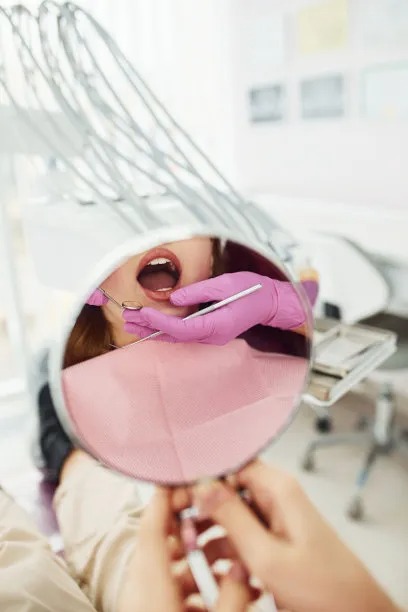Exploring Global Destinations Finding the Best Value for Dental Procedures Abroad
original:health91192025-02-21 14:11:17
Summary: In an era where healthcare costs are soaring, an increasing number of individuals are exploring global destinations for affordable dental procedures without compromising on quality. This arti
Summary: In an era where healthcare costs are soaring, an increasing number of individuals are exploring global destinations for affordable dental procedures without compromising on quality. This article delves into the phenomenon of dental tourism, examining factors such as cost efficiency, quality of care, popular destinations, and considerations for safety and communication. The summary provides a comprehensive guide to finding the best value for dental procedures abroad, enabling readers to make informed decisions and enjoy substantial savings while receiving world-class dental care.
1. The Rise of Dental Tourism

The concept of dental tourism has gained significant traction in recent years, with patients seeking treatments outside their home countries. This is largely driven by the disparities in healthcare costs globally, allowing individuals to save on expensive procedures. Dental tourism combines the benefits of affordability with the opportunity to experience new cultures and countries.
Predominantly, dental tourists originate from countries with high dental care costs, such as the United States, and venture to nations where such procedures are offered at a fraction of the price. This movement is facilitated by the globalisation of healthcare services and increased access to international communication channels.
To cater to the growing demand, many destinations now offer tailored dental tourism packages, which include not only the dental services but also accommodation, transport, and recreational activities. This holistic approach ensures a seamless experience for patients seeking dental care abroad.
2. Global Hotspots for Dental Care
Certain countries have emerged as hotspots for dental tourism due to their competitive pricing and high-quality services. Notable among these are Thailand, Hungary, and Mexico, each offering a unique set of advantages that attract international patients. In these nations, dental clinics have invested heavily in state-of-the-art equipment and have staff with internationally recognized qualifications.
In Thailand, for example, the combination of a vibrant tourism industry and world-class dental facilities has made it a premier destination for those in need of dental work. Hungary, often referred to as the Dental Capital of Europe, provides services that cater specifically to Western Europeans seeking affordable care. Meanwhile, Mexico remains a popular choice for North Americans due to its proximity and cost-effective treatment options.
These global hotspots not only provide cost savings but also adhere to international standards of care, often possessing accreditations from organizations like the Joint Commission International (JCI). This ensures patients receive quality treatment comparable to what they would expect at home.
3. Quality Versus Cost
When seeking dental care abroad, a common concern is whether low prices equate to lower quality. However, many international clinics offer services that meet or even exceed the standards of developed countries. This high quality is a result of both the intense competition in the dental tourism market and the clinics’ need to maintain a strong reputation to attract international clients.
Patients should conduct extensive research on potential clinics, assessing patient reviews, credentials of the dental staff, and the technology used. Many respected dental facilities abroad are staffed by practitioners who have trained or worked in Western countries, bringing a wealth of experience and expertise to their home nations.
Moreover, dental tourists often benefit from more personalized attention and swifter service, as clinics aim to impress their international clientele. With proper research and planning, patients can ensure that they will not have to compromise on the quality of care for affordable pricing.
4. Considerations and Precautions
While there are many advantages to seeking dental care overseas, there are also important considerations and precautions to take. Language barriers and cultural differences can pose challenges, so it’s crucial for patients to ensure there is clear communication with their chosen clinic. Moreover, understanding the legal and insurance aspects is vital, as recourse in the event of malpractice may be limited.
Patients are also advised to plan for follow-up care, whether abroad or with a local dentist, to ensure continuity and quality post-treatment. Additionally, they should account for the possibility of extended stays or return journeys in case additional treatments or adjustments are necessary.
Traveling for medical reasons also demands research into the stability and infrastructure of the destination country. Patients should prioritize safety, both in terms of their health and personal security. Ensuring comprehensive travel insurance coverage that includes medical repatriation is advisable for peace of mind during the dental tourism experience.
Summary: Dental tourism is becoming an increasingly attractive option for those wishing to combine quality dental care with cost savings. By exploring global destinations and understanding the associated dynamics of dental tourism, patients can access world-class dental procedures at a fraction of domestic costs. However, to fully benefit from dental tourism, one must carefully consider language barriers, legal aspects, safety, and follow-up care to optimize the experience and outcomes.
Choosing to explore dental destinations abroad is not merely a trend; it is a strategic approach to healthcare management. With the right planning and consideration, dental tourism can be a rewarding experience, both financially and culturally, providing patients with the best value for their dental procedures.